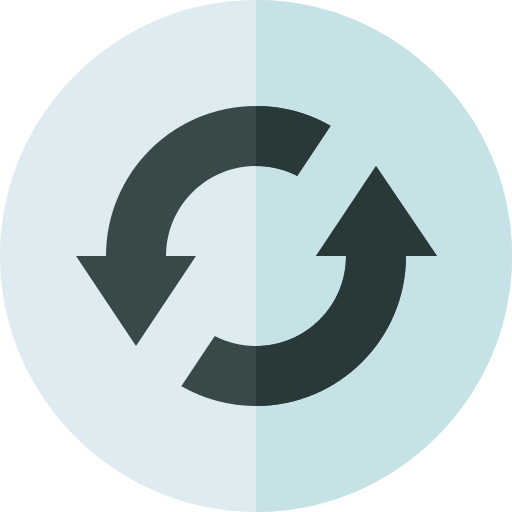AI Effect in ATS: Six Pros and Cons of Using Artificial Intelligence for Recruitment
Artificial Intelligence (AI) has transformed nearly every industry, particularly in AI recruiting and recruitment tools using AI are no exception.
Today, many Applicant Tracking Systems (ATS) leverage AI to speed up and improve hiring processes, promising efficiency and a better candidate experience.
However, while AI can streamline workflows, it also raises concerns about transparency, fairness, and potential job displacement.
In this article, we’ll break down how AI powered recruiting is implemented in ATS, explore key features and applications of ai recruitment tools , and highlight the pros and cons of integrating AI into your recruitment process.
What is an Applicant Tracking System (ATS)?
An Applicant Tracking System (ATS) is one of the essential recruiting tools that helps employers manage the hiring process.
ATS platforms automate resume collection, storage, and analysis, making it easier for recruiters to screen candidates and identify the most qualified applicants.
Quick Facts about high volume roles :
- ATS platforms vary by country due to different hiring practices and regulations.
- For example, ATS UK systems may have distinct compliance requirements compared to ATS software in the US.
Key Features of ATS
Modern ATS platforms often include features powered by recruitment AI:
- Job posting and applicant portals
- Resume/CV storage and management
- Automated resume screening and filtering
- Candidate communication tools
- Interview scheduling and coordination
- Customizable hiring workflows
- Analytics and recruitment metrics
- Integrations with other HR systems
- Compliance with data privacy regulations
- Mobile accessibility for recruiters and candidates
Uses of ATS
Applicant Tracking Systems help organizations expand their candidate pool:
- Automate recruitment workflows and reduce administrative tasks.
- Filter and rank candidates using predefined criteria.
- Enhance candidate experience through timely updates and user-friendly applications.
- Ensure compliance with hiring laws and avoid discrimination.
- Foster collaboration among recruiters and hiring managers.
- Maintain a talent pool for future opportunities.
- Analyze recruitment data to refine strategies.
The Role and Effect of AI in ATS
AI is revolutionizing how ATS platforms screen, evaluate, engage candidates, and optimize candidate sourcing to ensure quality hires.
Here’s how AI is transforming recruitment:
How AI Works in ATS
- Resume screening: AI scans resumes for relevant skills, education, and experience aligned with job requirements.
- Candidate ranking: AI scores and ranks candidates based on fit.
- Job matching: AI analyzes job descriptions to match openings with the most qualified candidates.
- Interview scheduling: AI automates coordination between candidate and recruiter calendars.
- Chatbots: AI-driven bots engage with candidates, answer FAQs, and provide updates.
- Video analysis: AI can interpret facial expressions, tone of voice, and other non-verbal cues during video interviews.
Effects of AI in ATS
- Automates repetitive tasks, freeing recruiters to focus on human-centered work.
- Provides personalized candidate experiences, including faster communication and better job recommendations.
- Helps reduce bias by using objective criteria (if trained with balanced data).
- Improves accuracy in identifying top candidates and predicting success.
- Enhances resume parsing using Natural Language Processing (NLP).
- Analyzes patterns in candidate data to optimize hiring strategies.
Types of AI Tools in ATS
AI tools integrated into ATS include:
- Resume parsers (NLP-powered)
- AI chatbots for candidate interaction
- Matching algorithms for job-fit scoring
- Predictive analytics for success forecasting
- AI interview scheduling tools
- Video interview analyzers
- Diversity and inclusion tools to minimize bias
Pros and Cons of AI in ATS
Artificial Intelligence is rapidly transforming how applicant tracking systems operate. While its advantages are impressive, it’s essential to weigh them against the potential risks. A balanced perspective helps recruiters decide if AI is right for their organization, especially when onboarding new employees . Here’s a clear breakdown:
Pros of AI in ATS
- Increased Productivity
AI can automate repetitive tasks such as resume screening, interview scheduling, and follow-up emails. This allows recruiters to spend more time on strategic tasks like relationship-building and decision-making. - Better Candidate Experience
AI-powered tools like chatbots and personalized job recommendations create smoother, faster, and more engaging interactions for candidates—leading to higher satisfaction and stronger employer branding. - Reduced Human Bias
AI can apply standardized criteria to candidate evaluations, helping to reduce unconscious bias based on gender, age, ethnicity, or background—promoting more equitable hiring practices. - Improved Accuracy in Shortlisting
AI can analyze thousands of resumes quickly and identify patterns that human recruiters may miss, increasing the chances of discovering top talent that would otherwise be overlooked. - Predictive Hiring Analytics
Modern AI tools can predict which candidates are likely to succeed based on data from past hires, improving long-term quality of hire and reducing employee turnover. - Scalability for High-Volume Hiring
For companies that receive hundreds or thousands of applications, AI enables efficient, consistent, and fast processing without sacrificing quality—crucial for scaling recruitment efforts.
Cons of AI in ATS
- High Implementation and Maintenance Costs
AI-driven ATS platforms often come with steep upfront costs, plus ongoing expenses for updates, customizations, and data storage—making them less accessible to smaller organizations. - Lack of Transparency
AI algorithms are often “black boxes.” When a candidate is rejected, it may be difficult for recruiters to explain why—raising compliance and ethical concerns, especially in regulated industries. - Potential for Algorithmic Bias
If the AI is trained on historical hiring data that contains bias, it may unintentionally replicate those biases, excluding candidates from underrepresented groups or favoring a specific profile. - Over-Reliance on Technology
Automating too much of the hiring process can lead to recruiters disengaging from critical human aspects of recruitment—like intuition, interpersonal evaluation, and empathy. - Job Displacement in HR Roles
Automation of key recruiting functions may reduce the need for certain roles in HR and talent acquisition, creating concerns about job security and deskilling within the industry. - Data Privacy and Ethical Risks
AI systems often rely on large volumes of candidate data. Mishandling that data, or failing to comply with data protection laws (like GDPR), can lead to legal issues and damage to brand reputation.
Real-Life Example: AI in Action at TechCorp
Case Study: TechCorp, a mid-sized software company, implemented an AI-powered ATS to streamline hiring. They used AI to screen over 5,000 resumes in just a few days—a task that previously took weeks.
Results:
- Recruiters focused more time on interviewing top candidates.
- Candidate satisfaction scores rose by 30% due to faster communication.
- TechCorp identified and hired three highly qualified developers they might have missed with manual screening.
However, TechCorp also faced challenges:
- Some rejected candidates questioned the fairness of the AI process.
- Recruiters needed extensive training to interpret AI recommendations correctly.
This example shows that while AI can dramatically improve efficiency, it also requires careful planning and oversight.
Frequently Asked Questions (FAQ)
1. How does AI improve recruitment in ATS?
AI automates resume screening, ranks candidates, matches jobs, and improves communication, helping recruiters identify the best talent faster with human oversight.
2. Does AI remove bias from hiring?
AI can help reduce bias by evaluating candidates based on objective data, but if trained on biased information, it can also perpetuate discrimination.
3. Can AI ATS tools be customized for different regions?
Yes. ATS platforms can be adapted to comply with local hiring regulations and cultural norms.
4. Are AI-powered ATS expensive?
They can require significant upfront investment, but successful implementation may result in long-term savings.
5. Can AI replace human recruiters?
No. AI can automate repetitive tasks, but human judgment is still essential for evaluating soft skills, culture fit, and final decisions.
Future of AI in Recruitment
- More advanced chatbots will handle candidate queries around the clock, improving engagement.
- Predictive analytics will enhance data-driven hiring decisions.
- Personalized onboarding using AI will help new hires integrate faster and more effectively.
- Increased diversity tools will proactively detect and reduce bias during hiring.
- AI-based video interviewing will become standard, offering deeper insights into candidate potential.
AI will continue to evolve, helping recruiters attract and retain the best talent faster and more effectively, but successful AI implementation will be crucial. However, ethical and regulatory considerations will remain crucial to ensure fairness and transparency, especially in addressing unconscious bias.
Conclusion
Artificial Intelligence in Applicant Tracking Systems offers both significant opportunities and critical challenges for hr professionals.
While AI can enhance productivity, accuracy, and the candidate experience as part of broader strategic initiatives, including writing job descriptions and onboarding new employees, it also brings concerns about cost, fairness, and job displacement.
Organizations should weigh these pros and cons carefully to improve their time to hire and fill, implement proper oversight, and train staff on recruitment strategies to maximize the benefits of AI while minimizing risks.



